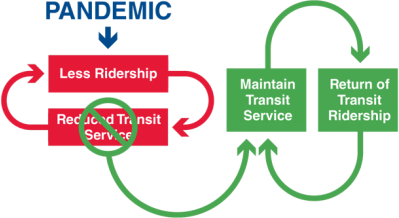Transit and Digital Transformation – The Post-Pandemic Imperative
The global pandemic brought profound change not only to our personal lives but to virtually every segment of the economy. Both public and private sector organizations have faced significant challenges. Fortunately, there have also been positive effects, as organizations have redefined their vision and embraced digital transformation to make it happen. My work with the transit industry illustrates this trend.
Transit operators saw the pandemic as a potentially existential threat. One operator experienced a 79% drop in ridership in just two months in early 2020, undermining their primary income stream, the fare box. While difficult conversations were had about cutting services and staff, leadership understood the consequences of such a decision. In the short term, essential services workers and marginalized communities, for whom work-from-home was not an option, would bear the brunt of service cuts. The potential long-term effects were even more profound. The graphic below illustrates what is not-so-affectionately known to transit planners as the “death spiral.”

The operator, appreciating the critical role of transit in a well-functioning society, defined a bolder vision, with the support of their government partners.

To succeed, the commitment to maintaining service needed to address one priority above all others – “how do we get our ridership back post-pandemic?” Digital transformation has been a key pillar of the strategy to win back returning riders, as well as attract net-new riders. Some of the many initiatives underway:
- Electronic fare collection options
- Automatic vehicle location mobile service
- Digital on-demand bus service
- Cloud-based workloads, enable improved innovation capabilities, resilience, and cost savings
Meanwhile, on the upstream side of the transit value chain, bus manufacturers also experienced pandemic-related disruption. As many customers were curtailing services and delaying orders for new buses, global supply chain and logistics challenges were impacting manufacturing productivity and vehicle production. There was the urgency to aggressively manage their financial metrics and to scale their cost structure in line with shifting customer demand.
Again digital transformation has a key role to play, in particular cloud computing. Many manufacturing companies have invested heavily in Cloud IT in order to shift from fixed CAPEX to variable OPEX. They’ve gained the ability to rapidly scale capacity up or down in line with market conditions. Additional benefits include enhanced security and innovation capabilities such as advanced data analytics.
My prediction is that the commitment to digital transformation and IT as a strategic enabler will accelerate, in transit and other sectors. This is how organizations will adapt and thrive in an unpredictable world.




